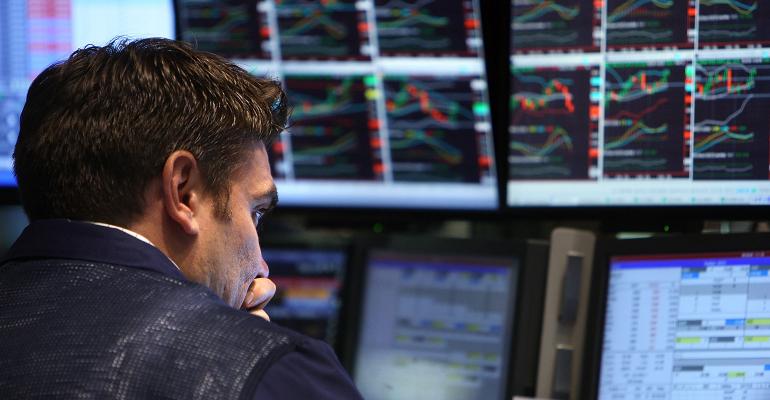As we approach the end of the year and confront cautionary warnings about equity valuations, ongoing moderate inflation figures, a hiking Fed and tax reform uncertainties, booking profits and rebalancing the price, action makes prudent sense.
So it was with great interest that I read that T. Rowe Price is cautious on stocks in 2018—this comes from their Global Market Outlook. The issue is simply that expectations are high, so upside surprises are limited in terms of earnings forecasts. As far back as August, other cautionary notes were offered by PIMCO and T. Rowe. Last week, Jeffrey Gundlach of DoubleLine reiterated his views (especially on junk and emerging markets), and we’ve heard similar concerns from Ray Dalio of Bridgewater on stocks as well as bonds. I know I’m not offering insights you won’t find in numerous headlines, but thought the consistent warnings were worth noting, because at some point such large asset influencers might follow through with action.
Indeed, that was the case when it was reported that CalPERS was looking at adding to its current bond market exposure of 19 percent to as much as 44 percent and shedding equity exposure from 50 percent now to as little as 34 percent. In an interview with Bloomberg, Keith Brainard of the National Association of State Retirement Administrators put it succinctly, “The markets have had a pretty good run and it’s possible CalPERS staff is thinking this might be a good time to lock in some of the gains.” Ya think?
Is the problem with the market the weakness in junk or concerns with China’s debt markets? Those are certainly elements but more a reflection of things after the fact. That is, price action can beget price action, but there are catalysts to start the process. In the case of stocks and risk assets more broadly, I’d say there are several things at hand:
- The curve is flat. This could be telling us something. It’s not yet predicting a recession but surely is saying that inflation is not a market problem, even the Fed’s models say it will be and keeps them engaged. It could be saying that the Fed is erring towards a policy error, or at the very least the market doesn’t see the same threat the Fed sees.
- People have said for months that markets were vulnerable but didn’t dare sell fearing they’d miss the rest of the rally. It reminds me a bit of what people are saying about Roy Moore—he should step down if he’s guilty. Yeah, I’ve heard ‘stocks are rich, but could rally more. If you doubt stocks are costly, consider the average hourly wage needed to buy a share of the S&P 500.
- Incomes are poor. I’m sorry, but REAL incomes are poor at, post the CPI report, just 0.4 percent if you look at Average Weekly and Hourly Earnings year-over-year. Seriously, they're not strong. The dip in the Savings Rate is what’s allowing for okay Retail Sales, but with Real Income gains I can’t see that lasting and, perhaps, that’s what the stock market is telling us.
- The Fed among others. To negate that central bank largesse hasn’t had anything to do with the strength of risk assets seems kind of lame. Thus, to say that when that largesse slows down, stops or reverses it won’t have some negative impact also seems rather lame. But that’s where central banks are. The Fed is hiking and shrinking its balance sheet. Canada is hiking, too. The European Central Bank will do that, and so we hear too from the Bank of England. For every action there is an equal and opposite reaction.
- Donald Trump and Congress. Seriously, investigate Hillary Clinton? We are mostly adults, do we need to read his superficial and emotional tweets? Do we gain any insight to hear his self-conscious recital of how well he did in Asia, that everything that came before was disastrous or that the low unemployment rate or the high GDP is because of him? The claims and hyperbole should make experienced market people cringe. There’s a lot of sizzle from the White House though policy-wise less steak.
I will get some criticism for bringing “politics” into this, but it’s not about politics but style and credibility. The latter is what makes me, and I think the markets, uncomfortable. For the president to lay claim to the stock market’s performance and low unemployment while referring to various deals as “the worst” and “disastrous” just doesn’t resonate with a sense of mature and considered leadership to say nothing of credibility. I suppose a 38 percent approval rating supports that view, and I think the risk is that it will impact markets in due course. FYI, from Jan. 2009 to Jan. 2017, the S&P 500 was up 250 percent, i.e., Obama’s regime. The Aggregate Bond Index was up 136 percent. Doing the simple math, if Trump has eight years in office and manages 15 percent gains in each of those years, the S&P 500 will be up 266 percent, not such a grand outperformance vs. the “mess” he inherited. - Which is to say, the risk markets have discounted a lot of good news from Washington regarding taxes on corporations and the like. Discounting does tend to run its course.
- Did I mention China’s credit issues and rich junk bonds?
David Ader is Chief Macro Strategist for Informa Financial Intelligence.





